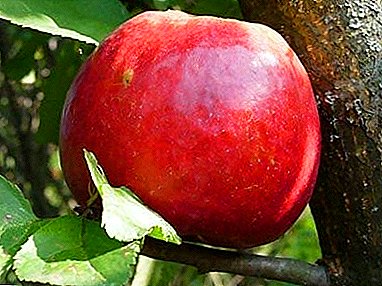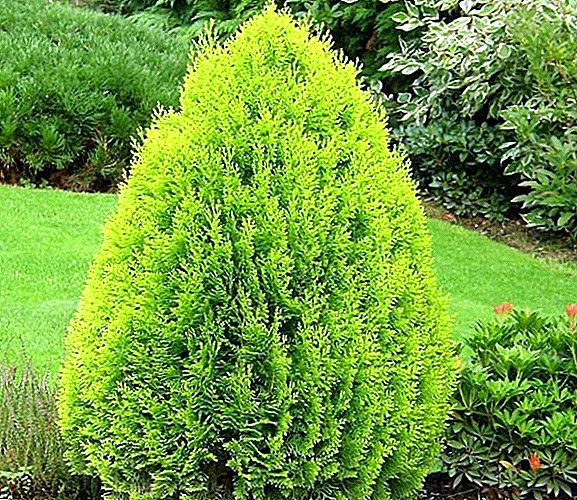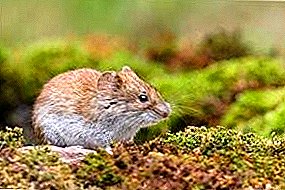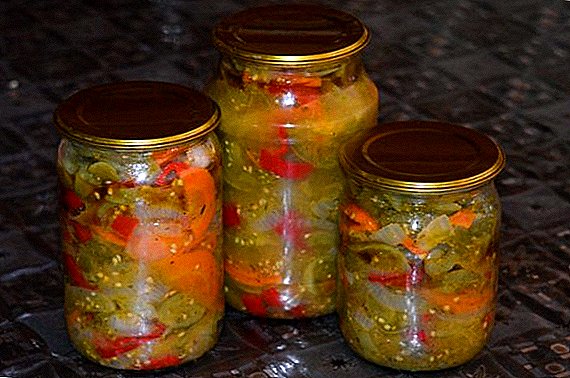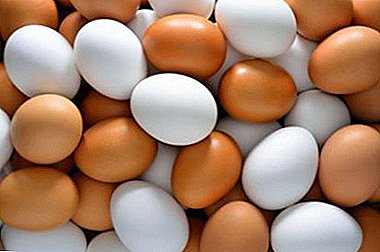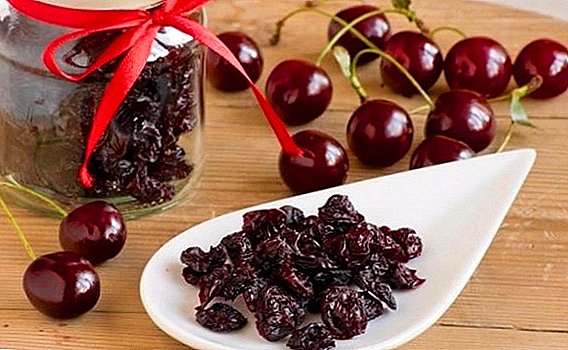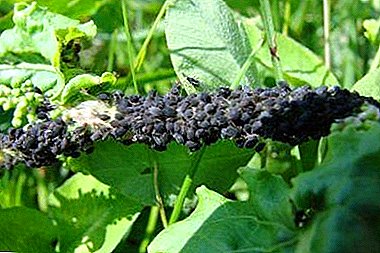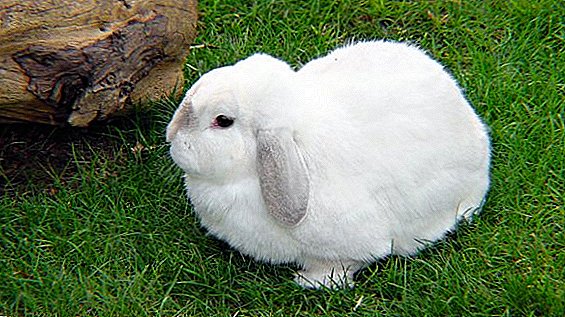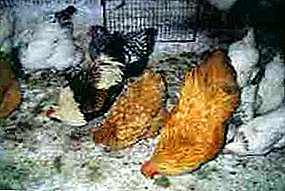
Breeding domestic chickens is quite troublesome and time consuming. Birds, like people, are prone to various diseases, often caused by inadequate care.
One of the common diseases of poultry is hypothermia, that is, hypothermia.
With hypothermia, body temperature drops below the indices that are necessary for normal metabolism and the functioning of the body.
In warm-blooded animals, including poultry, the body temperature is kept at a constant level, slightly deviating. The body temperature of birds ranges from 40 to 42 degrees.
What is bird hypothermia?
When exposed to cold and strong wind, the body can not always replenish stocks of heat. As a result of hypothermia, the poultry's body's need for oxygen decreases, which can lead to respiratory diseases, disruption of the bowels, colds and infectious diseases, etc.
Currently emit 3 degrees of hypothermia:
- low severity - body temperature drops to 30-35 degrees;
- intermediate degree - the temperature reaches 28-25 degrees;
- deep degree - body temperature indicators are 20-15 degrees.
All types of poultry are susceptible to hypothermia: chickens, ducks, geese, quails, turkeys, pheasants and ostriches. But more often hypothermia can occur in chicks, since in the first month of life they have virtually no thermoregulation.
Degree of danger and damage
Supercooling can result in death for small chicks.. To warm up, the chicks come together, closer to the heat source. They try to climb on each other, as a result of which the bottom chicks can be trampled.
The result of hypothermia is the death of poultry, and those who do not die can wither away for months.
Causes of illness
 Hypothermia occurs in young due to the inability to maintain a constant body temperature.
Hypothermia occurs in young due to the inability to maintain a constant body temperature.
In the first 30 days of life, chickens need artificial heat. Under adverse conditions of keeping hypothermia, often entailing the death of a bird, can occur very quickly.
Also, the causes of hypothermia poultry can be:
- Increased humidity in the room.
- The presence of drafts.
- Soaking down in chicks.
- Grazing birds in the dew.
The adult bird is more resistant to cold, but if low temperatures are combined with high humidity and damp bedding, the risk of hypothermia does exist.
Also, the cause of hypothermia birds can be wet snowduring which the plumage gets wet and subsequently becomes covered with ice. In summer, poultry is prone to hypothermia if it gets under the cool wind after swimming.
Course and symptoms
 External signs of hypothermia are:
External signs of hypothermia are:
- Diarrhea.
- Lack of appetite.
- Lethargy and drowsiness.
- Nasal discharge.
Liver tumors and inflammation of the kidneys can be added to these symptoms. Against the background of hypothermia, poultry causes diseases such as aspergillosis, pullorosis, and coccyrosis.
If, as a result of hypothermia, the bird has a cold, the signs may be as follows:
- The eyelids and nasal passages acquire a reddish tinge, swell. From the nasal passages mucus stands out, they can be clogged. The eyelids are covered with a crust, the corners of the eyes stick together.
- The bird's beak is often open. There is rapid breathing, shortness of breath. You can hear a sound like a cough.
- Observed swelling and redness of the mucous beak, narrowing of the trachea, gray-white crusts and films.
- In chicks, growth and development slows down, the luster of the plumage disappears, it becomes faded.
Diagnostics
 The main signs that can be used to diagnose hypothermia in adult birds and chicks:
The main signs that can be used to diagnose hypothermia in adult birds and chicks:
- Chicken seeks to find a heat source to keep warm.
- There is a muscle tremor.
- The skin and mucous membranes become cool to the touch.
You can also measure the internal temperature of the body of the bird. This procedure is carried out through the anus (cloaca) using a mercury or electronic thermometer, the tip of which is lubricated with petroleum jelly. If the body temperature has fallen below 36 degrees - hypothermia can be diagnosed.
Treatment
 Therapeutic measures depend on the degree of hypothermia of the bird.
Therapeutic measures depend on the degree of hypothermia of the bird.
First aid:
- The bird must be placed in a warm room. You can put a heating pad next to warm water.
- Offer the bird a warm drink.
- The main aid in hypothermia should be directed towards gradual active warming and prevention of further cooling.
During treatment, body temperature should be constantly monitored. The outcome of the disease depends on several factors: the severity of hypothermia, its cause and the amount of time elapsed from the onset of the disease to its treatment.
If the body temperature has reached the level of 36 degrees and continues to fall, then it is better to seek help from a qualified specialist. After heating, if there is no frostbite, and the state has stabilized, the bird can be returned back to the aviary.
 Fight breeding chickens Azil is presented on our website. After reading one article, you will learn everything about it.
Fight breeding chickens Azil is presented on our website. After reading one article, you will learn everything about it.In order to learn how to make foam-block baths with your own hands, click here: //selo.guru/stroitelstvo/sovetu/proekty-iz-penoblokov.html.
But in this article find out how it turns out the right care for orchids in the winter.
If, against the background of hypothermia, the bird has colds, the following set of measures should be taken:
- If a mucous membrane is damaged and crusts appear, give soft and liquid food to avoid irritation.
- Add a small amount of lemon juice to the drinker.
- Exclude bathing.
- Be sure to warm the room where the bird is.
A cold that is not cured in time can develop into pneumonia.
If the disease is caused by viruses, treatment can only be prescribed by a specialist in test results. Usually in this case, antibiotics, bacteriophages and drugs are used to strengthen the immune system.
Prevention
 To avoid hypothermia chickens need to be kept in warm conditions and properly organize their wintering grounds.
To avoid hypothermia chickens need to be kept in warm conditions and properly organize their wintering grounds.
The premises should be spacious, so as not to have problems with the respiratory system. It is important that there are no drafts in the area where the birds are kept.
For the young at night it is better to provide additional heating. This is especially true of the cold season.
For prevention, you can lubricate the exposed skin of the bird with petroleum jelly, sunflower oil or other animal fat. It is better for this purpose to apply goose fat mixed with turpentine - 10 parts of fat: 1 part turpentine.
Hypothermia poultry can be avoided or to cope with the disease at an early stage, if you pay due attention to the content, organize proper walking and care for the young. Breeders should remember that any bird disease is much easier to prevent than to deal with its consequences.


